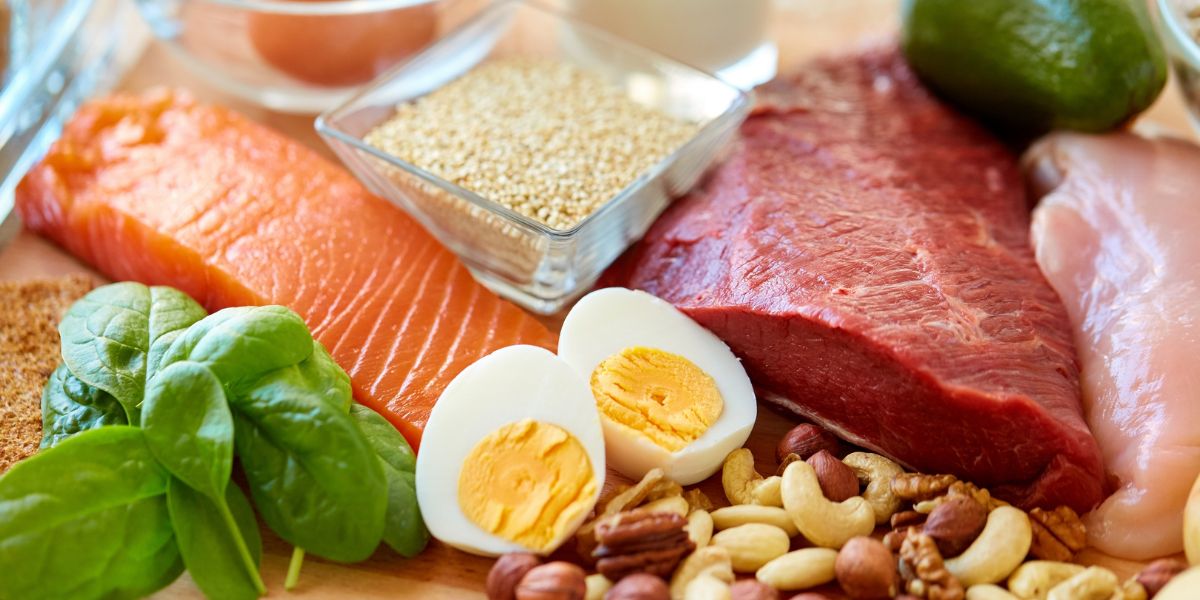October 24, 2023
Menopausal Women Need Unique Muscle Making Guidelines

Science shows the general guidelines don’t cut it for postmenopausal women.
By Selene Yeager
Postmenopausal women may not actually make muscle with moderate strength training, according to a new study. When it comes to making muscle, active menopausal women also don’t respond to the general population’s protein intake requirements. We need our own muscle-making guidelines designed just for us.
Now that exercise scientists are (finally) starting to study our demographic and menopause is a 600-billion-dollar business, that is hopefully on the horizon, but in the meantime, here’s what you need to know.
Muscle Goes Fast and Is Harder to Make
Generally speaking, adults lose about 3 to 8% of their muscle mass every decade after age 30—a loss that accelerates to 5 to 10% after age 50. For women, this loss is particularly precipitous, especially around the menopause transition.
Research shows you can lose 10% of muscle mass during perimenopause alone, and late perimenopausal and postmenopausal women are overwhelmingly more likely to have sarcopenia (involuntary muscle loss) than premenopausal or early perimenopausal women.
Muscle loss is a big deal. When we lose muscle and strength, we not only lose our speed and power in the sports we love, but also it puts us on a path that includes increased insulin resistance, bone loss, fracture risk, and chronic diseases like diabetes and heart disease.
That’s why the World Health Organization recommends all adults strength train major muscle groups at moderate or greater intensity at least twice a week, and the CDC says, adults “need muscle-strengthening activity, like lifting weights or doing push-ups, at least 2 days each week.”
Yeah. That may not cut it for us post menopause, which many of us know from experience, and as a new study published in BMC Women’s Health illustrates. In the study, researchers examined the effect of a 10-week resistance training program on 31 women, who were either premenopausal or postmenopausal to identify potential differences in strength and muscle mass gains, as well as fat mass loss, according to pre- and postmenopausal status. (Participants were classified as postmenopausal if they had low estradiol and high follicle-stimulating hormone and had not had a period for at least 12 months; perimenopause was not included as a category here.)
The postmenopausal women were also randomly assigned to a low-intensity (50% of 1 repetition max) or moderate intensity (75% of 1 RM) strength training program. (The premenopausal group was too small to subdivide, so they all performed the moderate intensity program.) Both programs included squat, bench press, row, lat pulldown, side bend, and plank exercises. Both groups trained twice a week, doing 6 to 8 sets for each muscle group per week. The low intensity group did 2 sets of 20 reps, plus one set to failure for the weighted exercises, and the moderate intensity group did 3 sets of 10 reps plus one set to failure.
In the end, all the women got stronger; they improved their upper body, lower body, and grip strength, which is great news: general strength training makes you stronger no matter what your hormones are doing. However, only the premenopausal women changed their body composition, gaining muscle mass and losing fat mass. The researchers concluded: “To achieve hypertrophy and/or body composition changes in postmenopausal women, larger training volumes (> 6–8 sets/muscle per week) are likely required.”
This is just one study, of course. But it’s worth noting, considering the number of women we hear from who tell us they can’t seem to change body composition post-menopause. If you’re following the general guidelines, that may be why. It’s also worth noting that the National Strength and Conditioning Association (NSCA) specifically recommends higher intensity lifting for older (i.e., >50) adults, including 2 to 3 sets of 1 to 2 multi-joint exercises per major muscle group at 70 to 85% of 1 RM, 2 to 3 times a week. They also recommend including power exercises performed at higher velocities (which we also recommend) with moderate intensities (i.e., 40–60% of 1RM).
Postmenopausal, and we’d say also perimenopausal women, should aim for the higher end of those NSCA ranges. Research finds you can build hypertrophy (i.e., bigger muscles) in a variety of repetition ranges. For the greatest strength-building stimulus, work up to doing big lifts like squats, bench presses, and deadlifts at heavy weight (i.e., 4 to 5 sets of 6 or fewer reps at ~85% of 1 RM). Round out your program with other moves like lunges and rows at more moderate intensity (i.e., 3 sets of 8 reps at 75% 1RM).
Include strength training in your routine three days a week when possible. (If you’re new to strength training, work with a trainer to learn proper technique and progression. You can find our free Feisty Menopause Beginner’s Guide to Strength Training here.)
Finally, keep doing those high intensity intervals, especially short sprint intervals, which research shows also helps increase lean muscle mass and reduce body fat in menopausal women.

And a Word About Protein…
You can’t make muscle if you don’t have the amino acids in your system to generate it. In short, that means eating enough protein, especially because we can develop more “anabolic resistance” with age and during menopause, meaning that our muscles become less sensitive to protein.
“In research, we see an increase in protein turnover and increased protein catabolism…you can think of it as breaking down muscle as default,” explained Sam Moore, MS, CSCS, an applied sport scientist and Human Movement Science Doctoral student at the University of North Carolina at Chapel Hill’s School of Medicine on episode 150 of Hit Play Not Pause. Increasing the percentage of your protein intake can help blunt that catabolism.
When we talk about eating more protein here at Feisty Menopause, we sometimes get pushback that the RDA is 0.8 grams per kilogram (of body weight) a day, which for a 150-pound woman would be about 55 grams. That’s the amount that scientists determined we need to maintain nitrogen balance and prevent deficiency in sedentary women. It will not help you build muscle. Plenty of research indicates that at this point, including a 2020 systematic review and meta-analysis that concluded that “for people who are exercising and/or trying to lose weight, the RDA for protein of 0.8 g · kg · day may no longer be an appropriate recommendation.”
Another meta-analysis from 2022, concluded that adults should be taking nearly twice that amount (1.5 grams per kilogram of body weight) if they want to maintain and/or augment muscle strength along with resistance training.
For active women specifically, the 2023 International Society of Sports Nutrition position stand recommends at least that amount, and maybe even more, concluding: “Daily protein intake should fall within the mid-to-upper ranges of current sport nutrition guidelines (1.4–2.2 g·kg·day) for women at all stages of menstrual function (pre-, peri-, post-menopausal, and contraceptive users) with protein doses evenly distributed, every 3 to 4 hours, across the day.”
Bottom line: The exercise guidelines are designed to get a largely sedentary population moving, to do the least they can do to protect their health. The nutrition guidelines are there to prevent deficiencies in that same population. We’re a whole new generation of active, athletic women in menopause trying to perform our best for all the years we have. That’s gonna take more than the bare minimum.


 Outspoken Women in Triathlon Summit Returns Bigger than Ever
Outspoken Women in Triathlon Summit Returns Bigger than Ever  Driving the Lamborghini: Productivity and the Power of Paper
Driving the Lamborghini: Productivity and the Power of Paper  5 take aways from the Compete Sports Diversity Summit
5 take aways from the Compete Sports Diversity Summit  Simple Tips to Hone Your Bike Handling Skills
Simple Tips to Hone Your Bike Handling Skills 


